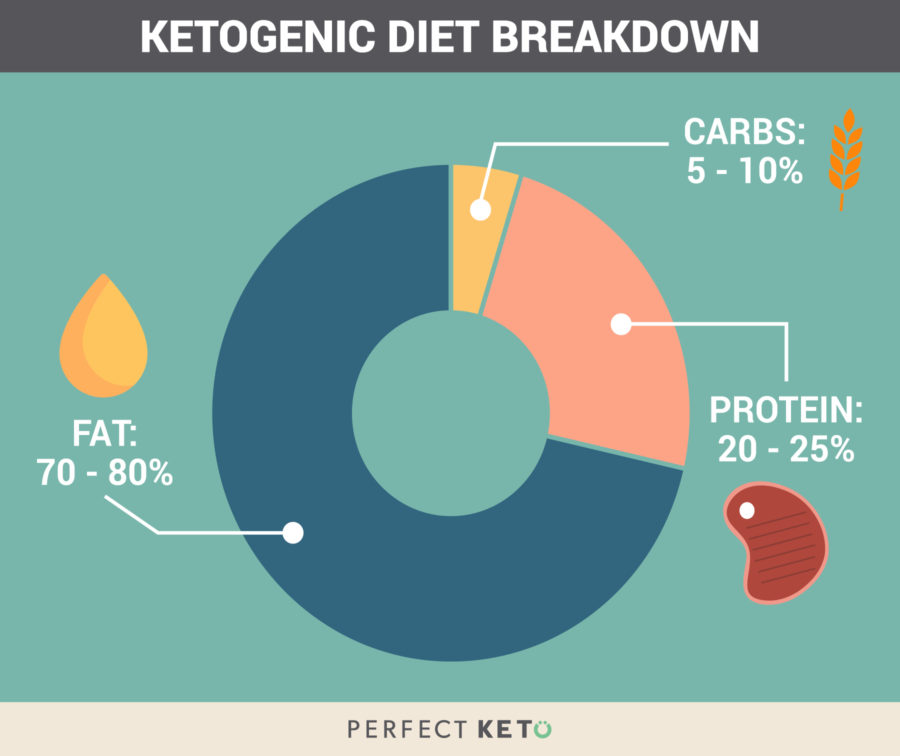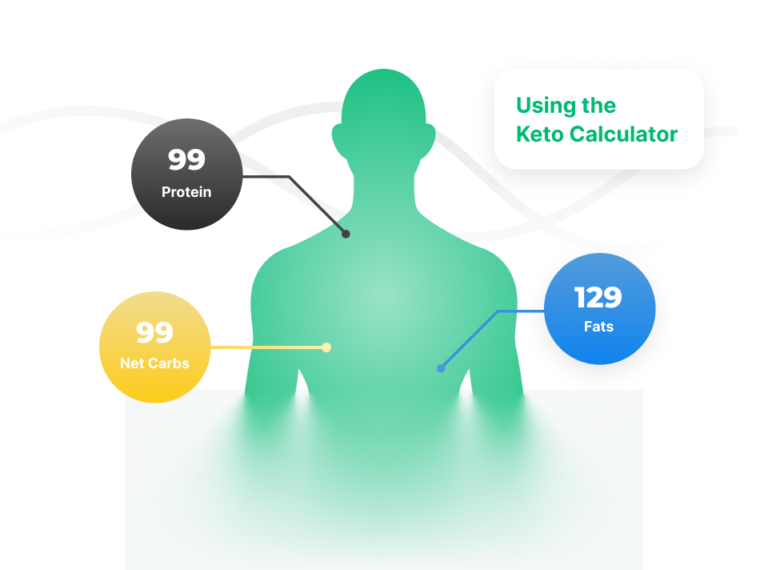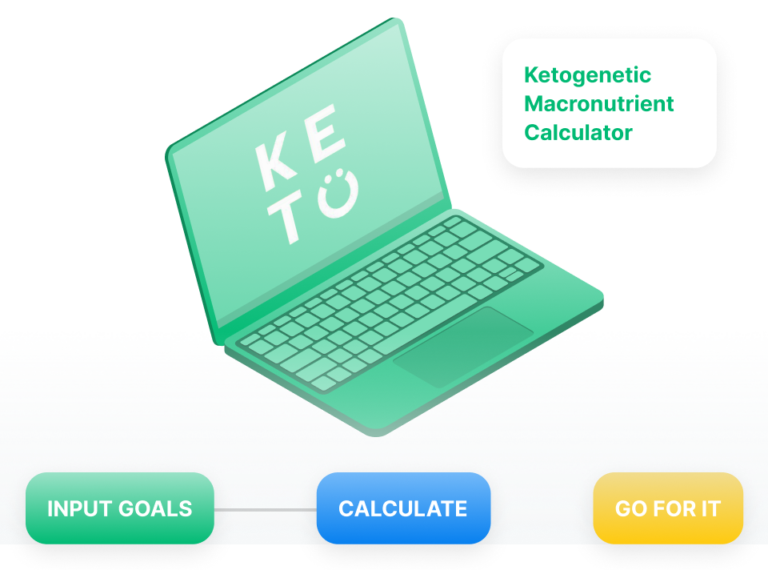Step 1
Enter Your Details: Gender, Age, Height, and Weight
The keto calculator uses your gender, age, height, and weight to find something called your basal metabolic rate (BMR), which is the amount of energy you spend per unit of time while resting.
Basically, how much energy you burn while doing absolutely nothing.
This calculator uses the Mifflin-St.Jeor Formula to find your BMR, which is among the most accurate formulas. One study found it shows a strong correlation between the predicted BMRs and the actual BMRs[*].
This is why your details affect your BMR:
- Gender: Body composition is different between men and women.
- Age: Your RMR decreases with age as your muscle mass declines, especially after age 30.
- Height & Weight: Needed to know your unique body composition.
Next, the keto calculator determines your energy consumption when you’re not resting.
Step 2
Enter Your Activity Level
Your physical activity level (PAL) measures how much energy you spend daily when you’re active.
The calculator combines your BMR and your activity level to find your total daily energy expenditure (TDEE), which is the number of calories your body burns in 24 hours.
Your TDEE tells the calculator how many calories you need to eat daily to cover your expenditure.
Step 3
Calorie Intake Goal
Here you can tell the calculator if you want to maintain, lose, or gain weight by picking a calorie deficit or surplus.
For example, if you choose a 10% calorie deficit, your total daily calories will be 10% lower than you actually need. This will help you lose a moderate amount of weight.
If you put a 10% calorie surplus, your daily calories will be 10% higher than you need, which helps you gain weight.
Here’s how the calorie bar works:
- To maintain weight: Keep the bar at 0%.
- To lose weight: Move the bar between 0 and -50 (calorie deficit). Stay within 10-20% for moderate weight loss.
- To gain weight: Move the bar between 0 and +50 (calorie surplus). Stay within 10-20% for moderate weight gain.
If you chose the keto calculator at the beginning, the journey ends here and it will give your macro targets. If you’re using the specialized calculator, you have a few more details to fill in:
Step 4
Advanced Fields (In the Specialized Calculator Only): Body fat %, Protein Ratio, and Total Carb Intake
Body Fat %
Your body fat percentage is used to determine your lean body mass and contributes to a more accurate estimation of your TDEE.
This helps the keto calculator figure out how many calories from protein you need per day to lose weight without reducing your muscle mass.
If you don’t know your body fat percentage, you can measure it at home, the gym, or in a health facility. These are the two most accurate methods:
- Skinfold Calipers: Skin calipers are affordable and easy to get on Amazon. Your local gym most likely has them too. A skinfold caliper works by pinching one area of your skin that folds easily (like your belly and back), in three to ten different areas of your body to measure your subcutaneous fat. That measurement is then used in a formula to calculate your body fat percentage. If you’ve never done this before, let a physician or coach do it first and teach you how to read the measurements accurately so you can do it at home next times.
- DEXA (Dual-Energy X-Ray Absorptiometry): If you can afford it, a DEXA scan will give you the most accurate results. A DEXA is an X-ray treatment that measures body composition and can detect bone mineral density, lean body mass, and fat mass with great accuracy. However, they can only be done on a health facility and a comprehensive session can cost up to $160.
Other methods at home like online calculators and bioelectrical scales can be wildly inaccurate, so avoid these.
There are other techniques done in health facilities like air-displacement plethysmography and hydrostatic weighing, but these are pricey as well and not as thorough as a DEXA scan.
It’s recommended you measure your body fat percentage every six to eight weeks.
Protein Ratio
Now that you know your body fat %, you can measure your lean body mass (LBM) and then pick your protein intake accordingly.
Your LBM is simply the remaining percentage that isn’t body fat.
Here’s an example:
If you weigh 150 pounds (68 kg) and your body fat percentage is 20%, then your lean body mass is 80%, which in pounds would be:<
- Body fat % = 20%*150 lb= 30 lb (13kg)
- Lean body mass = 150 lb-30 lb = 120 lb (54.4kg)
To maintain your muscle mass while losing weight, input 0.60 -0.80 grams per lb of lean body mass (1.3 to 1.7 grams per kg LBM).
In this example, you would input 72-96 grams of protein (0.60*120 lb or 0.80*120 lb).
To gain muscle mass, the protein ratio should be between 0.8 to 1.2 grams per lb of LBM (1.7 to 2.3 grams per kg LBM).
In this example, you would input 96-144 grams (0.80*120 lb or 1.2*120 lb).
Total Carb Intake
Here you simply input the number of carbs you want to eat. It’s recommended you leave it in the standard range of 20-50g of net carbs.
Finally, the keto calculator takes all this input and creates the perfect macro targets for your goals.





